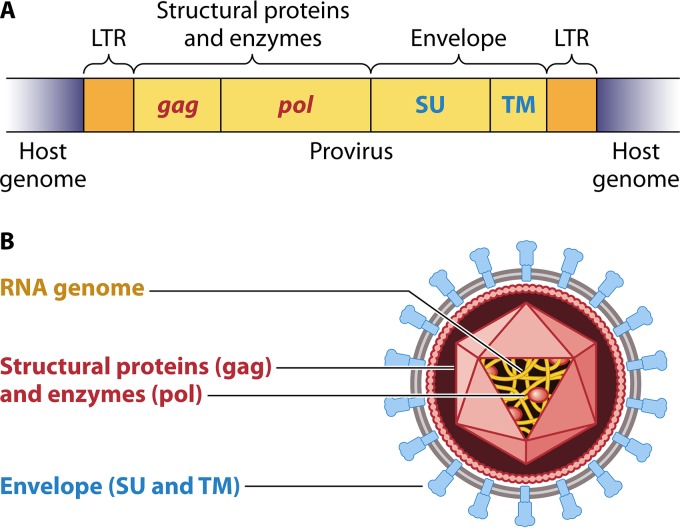FIG 1.
(A) An integrated double-stranded DNA provirus (yellow) of a simple orthoretrovirus within the host genome (gray) is shown. The long terminal repeats (LTRs) are at both the 5′ and 3′ ends of the provirus and flank the retroviral gag, pol, and env coding regions. Regions coding for enzymes and other proteins are shown with font colors corresponding to their depiction in panel B. (B) Schematic drawing of a simple orthoretrovirus. All orthoretroviruses have three component parts: (i) the RNA genome, shown in yellow; (ii) internal proteins, shown in red, including internal structural proteins (Gag) as well as the viral enzymes, including the reverse transcriptase (Pol), which makes a DNA copy of the RNA genome which will be integrated into the host cell genome; and (iii) the envelope proteins, shown in blue. Env consists of two components: the TM moiety is embedded in the membrane (depicted in gray and white) of a host cell and is incorporated into the virion during the budding process, and the surface glycoprotein SU forms the knobs and is the part of the virus that binds to receptors on susceptible cells of the host.

